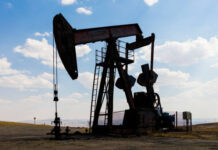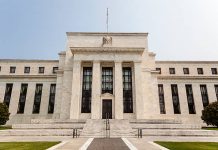The cautious détente during the European session yesterday was short-lived. Sentiment soured as the US joined with president Biden announcing additional sanctions on Russia. Ukraine government and bank websites were targeted in cyberattacks and added to lingering fears of an impending all-out war. European stocks erased >1% gains to finish in the negative. Wall Street tanked 1.4-2.6%. Core bonds traded atypical with German yields still rising 4 bps at the front (2y). US yields even added 3.2-6.4 bps across the curve. The Swiss franc did well, closing below EUR/CHF 1.04 again. The euro but also the dollar and even the yen all traded mixed. But while yesterday may not have been a classic risk-off session, today absolutely is. Before dawn, president Putin of Russia ordered a special military operation to target military facilities across Ukraine. Putin said it wishes not to occupy Ukraine but to demilitarize it. Ukraine’s president Zelenskiy called it a “full-scale invasion” and imposed martial law. The US already responded that it will impose severe sanctions on Russia. Other countries including Australia unveiled new sanctions as well. The Moscow Exchange halted trading in the ruble, stocks and futures but damage on other financial markets is material.
Equities: Asian-Pacific stock exchanges plummet with losses mounting to more than 3%. Stock futures point to heavy losses of >4% for Europe and more than 2% in the US. The EuroStoxx50 will probably lose support from the pre-pandemic high at 3867.
Bonds: US Treasuries and German Bunds skyrocket amid safe haven flows. US bond yields currently nosedive 9 to 13 bps with the belly of the curve outperforming. The 10y yield (-12 bps) is looking at support around 1.84%. Germany’s 10y will most likely gap below 0.15% support.
Currencies: a stellar performance by the Japanese yen. EUR/JPY slides from 130 to 128.7 with support at 128 kicking in. USD/JPY gives up the fight with 115 and eases to 114.5 currently. The Swiss franc takes second place. EUR/CHF intraday set a new 7 year low sub 1.03. The dollar finishes the top three. EUR/USD hit the lowest level since the ECB pivot in early February at 1.1236. Every single currency with the slightest whiff of risk, gets sold. The NOK and SEK lose 0.6-1.5% depending the major plotted against. Central-European currencies shed 1-1.4% against the euro and up to 2% against the dollar. The Czech koruna (EUR/ZK 24.91) underperforms regional peers. Turkey’s lira goes 2-2.5% down. The Russian ruble in interbank trading neared USD/RUB 90, printing losses of more than 5%.
Commodities: Brent oil (>5%) surges above $100/barrel for the first time since 2014. Natural gas prices surged more than 10% and go berserk with a 25% rise at the open. With Ukraine as key exporter of corn and wheat, prices of both soft commodities jump 4-5%. The price of safe haven asset gold jumps 1.8% to $1943. Other metals rose up to 3%
Uncertainty and risk-off is the name of the game for today. Although the market impact of geopolitical events tends to fade after a relatively short period of time, we’d advise not to row against the current tide.
News Headlines
The Bank of Korea kept its policy rate unchanged at 1.25% as expected following back-to-back 25 bps rate hikes in November and January. Upward revisions to inflation forecasts suggests that more tightening is under way. The BoK increased its 2022 prognosis from 2% in November to 3.1% while lifting the 2023 number from 1.7% to 2%. Growth forecasts remain unchanged at 3% and 2.5% respectively. Price pressure both comes internally from services costs as externally via commodity prices. The Ukrainian conflict in this respect poses both upside inflation risks and downside growth risks. Governor Lee at his final meeting said that one more rate hike would still not be considered as tightening. Market expectations of a policy rate <=2% by the end of the year are in line with the BoK’s views. The Korean won loses out in this morning’s risk-off move with USD/KRW rising from 1190 to 1202.












